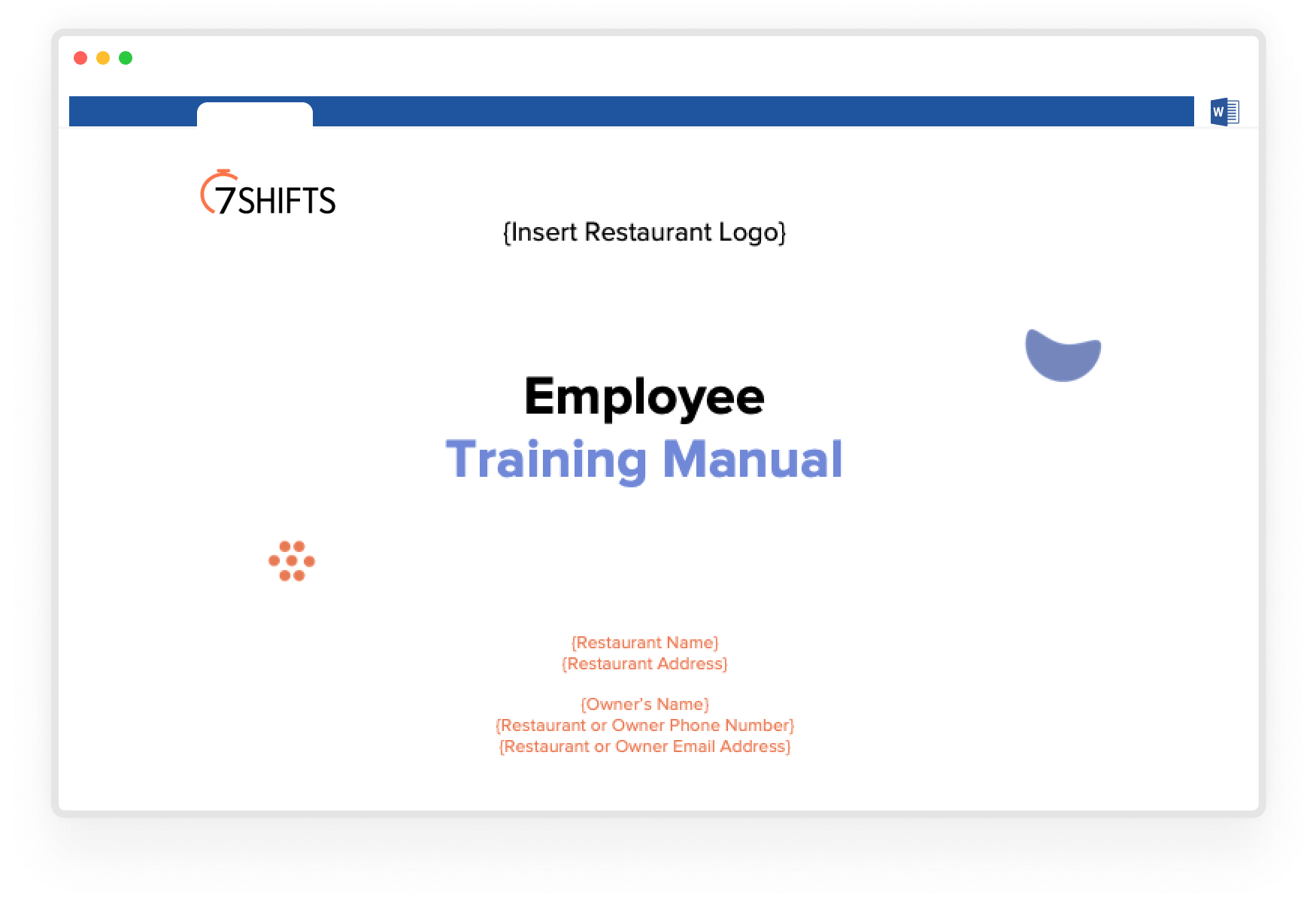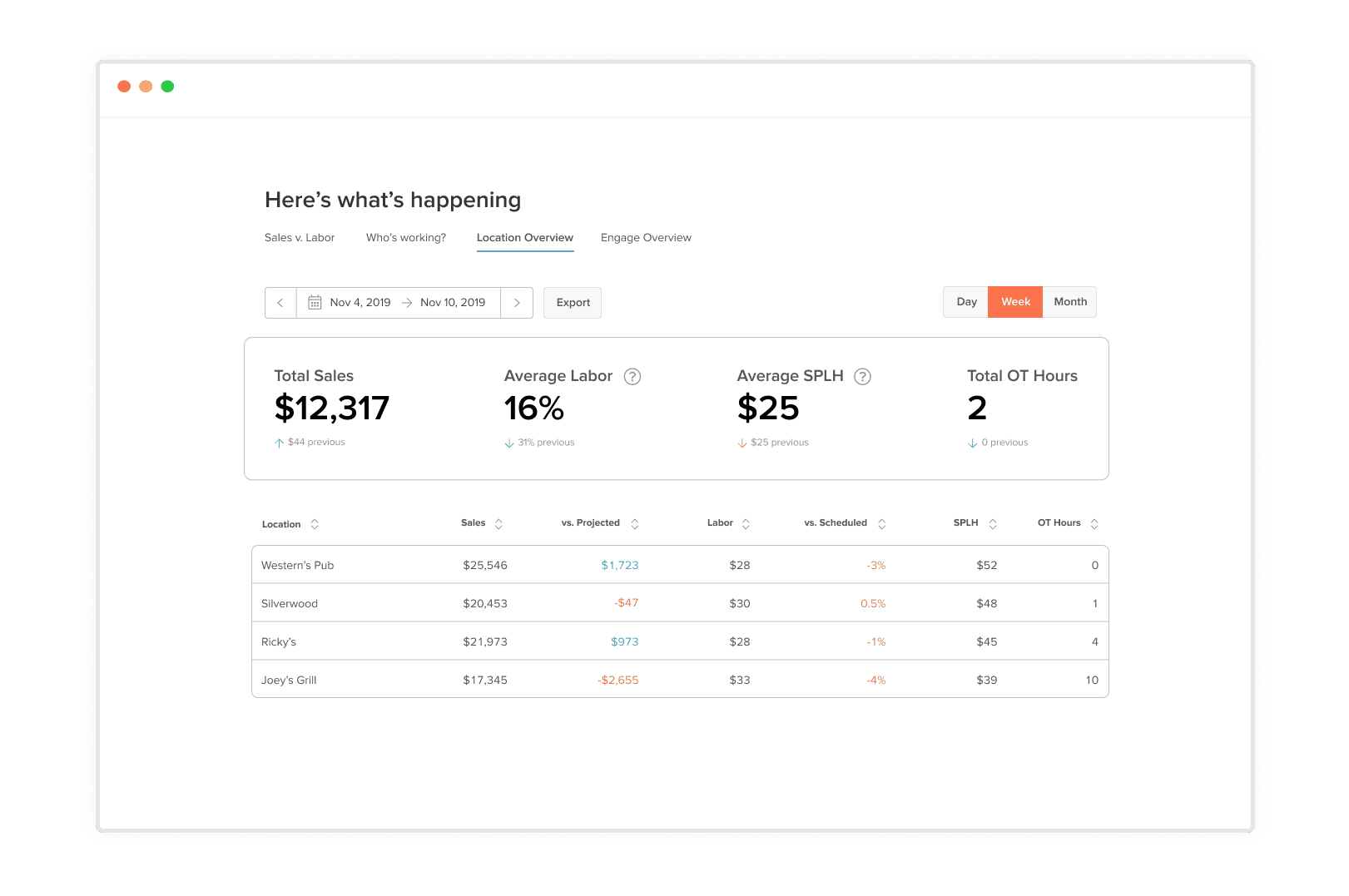Managing multiple restaurant locations is a good challenge to have. It means guests love the food you serve so much that one location simply won’t cut it — and you get to serve more customers, generate more revenue, and expand your business.
But to be clear, multi-location restaurant management is challenging. It requires a manager to differentiate concepts, ensure a consistent guest experience, and manage multiple teams across multiple locations.
Whether you’re managing multiple restaurants right now or are thinking about expanding your current business, this guide has everything you need to run more than one restaurant at once with success.
Should You Choose a New Concept or Replicate an Existing One?
Expanding your place in the food service industry happens in one of two ways — developing a new restaurant concept or replicating an existing one. Each option comes with advantages and disadvantages, which should be considered before breaking ground on a new location.
Whichever way you go, remember that for every new restaurant you open, you’ll need to conduct any necessary market research and document your planning process with a restaurant business plan and a feasibility study.
Developing a New Concept
Starting from scratch with a new restaurant idea can be exciting for the eager restaurateur. Switching from a fast-casual concept to fine dining can allow for a nice change of pace. You may also benefit from diversification in your market, particularly if you’d like to open your next location close to an existing one. Consumers at-large prefer independent restaurants to chains, so diversifying the types of restaurants under your management can give diners more of what they love..
However, this decision requires more work when it comes to opening and managing the restaurant. You won’t be able to refer to your previous restaurant opening playbook and follow it to the letter. There’ll be new branding, a new staff, different inventory, and updated forecasting involved. As you operate the restaurant, you’ll also need to prepare for different clientele, budgeting, and staffing needs.
Replicating an Existing Concept
If your restaurant is a number one hit in your area, it may serve you well to open up the exact same concept elsewhere. The benefits of this decision include relying on a proven business model, which will ease the opening and operating process, as you’ll be able to refer to what worked (and what is working) at your original location.
However, it’s important to note that just because a restaurant thrives in one area doesn’t mean it will be as successful in another. You should engage in thorough market research to see if your quick-service pizzeria will work as well in the suburbs of the city you’re in, for example. It’s also worth considering the risk of market saturation here — too much of a good thing can lessen its appeal. Sometimes less is more.
How to Create Consistency with Your Restaurant Operations
To whatever extent possible, restaurant operations should be consistent across all of your locations. If you’re managing multiple locations of the same concept, you’ll benefit from having a universal approach to hiring, training, suppliers, technology, and the overall guest experience.
Even if you’re managing multiple locations with different concepts, you’ll still be able to develop processes to apply to all of your restaurants to ensure operations meet your stamp of approval.
Here are the key areas to create a consistent process for in your restaurants.
Hiring
Making the right restaurant hire is more important than ever. There’s just not enough time for restaurants (or the candidates they’re interviewing) to prolong the hiring process, so it must be systematic and efficient — especially for multi-location restaurant businesses.
For restaurants of the same concept, creating a bank of appropriate restaurant interview questions and a default interview structure can save time whenever there’s an open role Even if your locations don’t share a concept, you can still have a universal mindset around the hiring process — like hiring for fit, instead of skill.
Training
Standardized training across all of your locations unifies all employees to work within the guidelines you’ve created. That way, each restaurant will operate just as efficiently and consistently as the other. You can use an employee training manual template to document these steps in training and share it with each location’s managers and employees (and adjust the document for different concepts).

Recommended Download: Free Restaurant Employee Training Manual Template
Performance Management Across Locations
With more locations come more points of analysis, which in turn helps you determine what your under-performing locations can take away from your top-performing ones.
Say, for example, one of your five same-concept locations didn’t generate as much profit as the other four. You can reference and compare the key restaurant metrics from all of these locations like total revenue, profit margin, inventory variance, etc. to see where that location might be falling short. From there, you can apply the best practices from top-performing locations to bring your less-profitable unit up to par.
Supplier Sourcing
One of the many benefits of multi-location restaurant management pertains to inventory and ordering. Oftentimes, vendors and suppliers will provide restaurant businesses with a discount when purchasing in bulk, so it’s worth looking into a revised pricing structure when expanding your business, or possibly a larger supplier who is willing to offer better rates.
This benefit also applies to restaurants with different concepts. Chances are there will be some overlap in ingredients between concepts, providing an opportunity to increase your overall margins.
Guest Experiences
A consistent guest experience across all locations largely stems from the criteria outlined above. For restaurants of the same name and look, guests want a nearly identical experience at one location as they would get at another. This requires shared hiring, training, and supplier management. The result is food that tastes the same, served by a polite and efficient staff at every location.
Even if you’re managing multiple locations of a different brand or concept, you can still unify all of your restaurants under the same ideals. One incredible example of this concept in action is in Boston’s Barbara Lynch Collective. Lynch operates seven unique restaurants, but despite their differences, each location emphasizes the importance of storytelling through food. “Hard work, unbridled creativity, a passion for discovery, and a love for genuine human connections” drive the passion for this multi-location restaurant group — and regardless of which spot they go to, guests will experience meals created under these ideals.
Recommended Reading: [Guide] How to Build Restaurant Core Values
Atmosphere
Much like the guest experience, the atmosphere of your restaurants shouldn’t differ too drastically between locations. Through simple choices like lightning levels, playlists, and table setup, you’ll be able to recreate the vibe your guests rely on whenever they sit down at one of your restaurants.
The exception here, of course, is when your restaurant concepts are too dissimilar. An elegant seafood restaurant shouldn’t have the same vibes as a neighborhood gastropub, so switch it up when the situation calls for it.
Delegating Responsibilities
It makes total sense if you’re reading this article and thinking to yourself, “how can I manage all of these requirements and still get some sleep at night?”
One word: delegation.
Normally, with multiple restaurant locations comes resources to help you control operations. As a multi-location restaurant owner, you’re in the position to delegate essential tasks to your restaurant managers, who are on the floor of specific locations more often than you are. You might delegate back-of-house responsibilities to the executive chef at each location, while server scheduling and other front-of-house operations go to the general manager.
As an example, instead of pulling and analyzing sales reports for every location yourself, you might instead instruct managers to generate these reports and add commentary on any areas of the report that are most noteworthy (sales slumps, inventory shortages, etc.). This approach saves you time scouring pages of sales reports looking for trends and gives you the insights you need to reach conclusions and develop necessary action plans. Better yet, using technology like 7shifts Manager Log Book can make this process even simpler.
This delegation also frees up time for an owner to look at the business from a bigger picture, like comparing location performance and profitability, creating synergies across restaurants, and even considering further expansion opportunities.
Keep Your Team Connected
Improving employee communication is essential in any restaurant — not just among team members, but also with managers and the owner(s) of a restaurant business. Your employees are the ones interacting with your customers, working in the kitchen, and serving meals the most.
An open line of communication open between yourself and your managers and employees is the heartbeat of successful restaurant operation. Not only does it let them know their opinions are valued, but it also gives you a direct outlet to those who know a specific restaurant location better than even you sometimes do — and that’s a good thing!
Some easy ways to foster stronger communication between you and your staff include:
- Ensuring all managers have your phone number and every employee has a way to contact you directly (email, phone number, etc.).
- Set daily, twice-weekly, or thrice-weekly one-on-one check-ins with each manager, as well as regularly scheduled site visits.
- Sending out a weekly or monthly survey for employee ideas, feedback and/or employee Net Promoter Score scores.
- Making a point to attend pre-shift meetings at each location once or twice a month.
- Calling out moments when employees deserve praise, either in a public forum or to the employees directly.
Using Technology to Run Multiple Locations
Aside from delegation and open communication, restaurant technology is proven to help multi-location restaurant owners run their operations better. These tools ensure a consistent and streamlined approach to running a restaurant wherever possible.
You can find individual solutions for tech in each of these areas, but you’ve already got your hands full with multiple locations! A robust platform like 7shifts that offers them all to keep everything managed in one system.
Hiring
Restaurants are no stranger to hiring woes, but hiring software tends to make the process more positive and effective. You can use it to post roles online, review candidates, and easily track applicants in one place.
This tool is beneficial for multi-unit restaurant businesses because of the ability to retain applicants for future availability. If you own several restaurants in the same area, roles will pop up left and right. Hiring software enables you to reconnect with a qualified applicant to get them hired faster.
Restaurant Dashboards
Reporting is a necessary and recurring task for restaurateurs. It holds owners accountable and identifies opportunities for improving the business. Restaurant reporting also pinpoints areas where wasteful spending can be reduced — particularly for labor.
When you do choose a software for reporting, make sure there’s a dashboard feature so that you can quickly get a bird’s eye view of performance across all locations.

7shifts Restaurant Dashboard Tools
Multi-Location Restaurant Scheduling & Time Clocking
Restaurant employee scheduling tools is a staple in a restaurant’s tech stack, but there are important features in a software built for multi-location businesses — namely, compliance with local labor laws. After all, your employees are still eligible for overtime pay even if they split their hours between locations in your restaurant group. You can also save $500 each week per location by reducing payroll errors and time theft with time clocking software.

7shifts Time Clocking App for Restaurants
Online Employee Communication
Restaurant communication tools make it possible for you to share important documents with any or all of your employees from the locations. These tools open up the door for employees to communicate with each other regarding approved shift trades, saving managers from a potential headache over rescheduling.

Online Restaurant Communication Software by 7shifts
Manager Log Book
You can’t be everywhere at once, and that’s why manager log book tools are so important in multi-location restaurant management. This tool allows general managers to take down instantly-accessible notes on staffing issues, operations performance, and more so owners can be alerted immediately. It’s a quick and reliable way to document and refer to need-to-know information.

Manager Log Book Software for Restaurants by 7shifts
POS System
Last (but certainly not least) is a restaurant POS system that’s equipped for multi-location functionality. Your POS should allow for easily-accessible sales data and key performance metrics for any and all of your restaurant locations. This spares you from the alternative of having to source reports from each of your locations and means you can act on any learnings sooner rather than later. Your POS should also integrate with the rest of your tech stack, so data flows freely between them.

AJ Beltis, Author
AJ Beltis
Author
AJ Beltis is a freelance writer with almost a decade of experience in the restaurant industry. He currently works as a content manager at HubSpot, and previously as a blogger at Toast.
